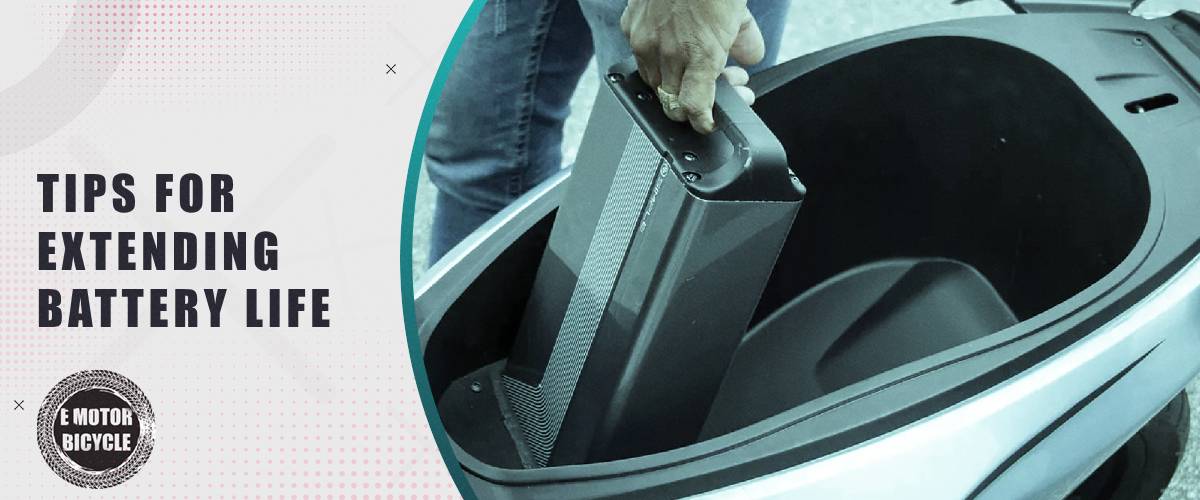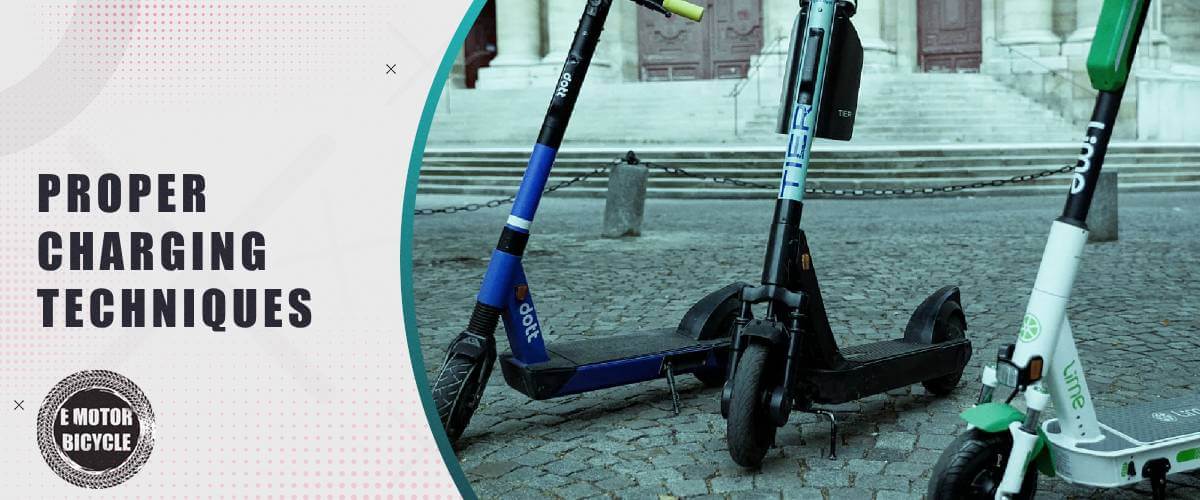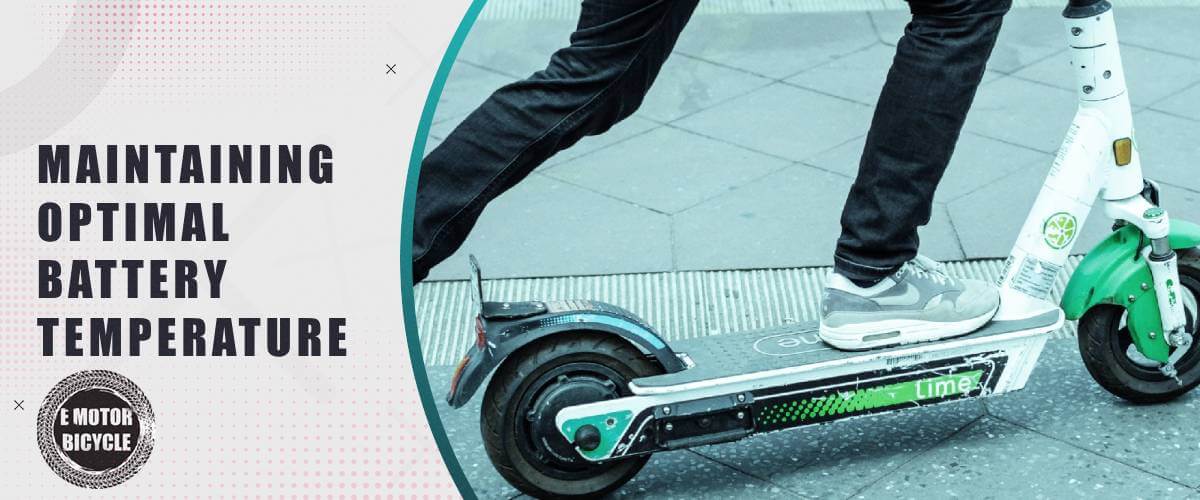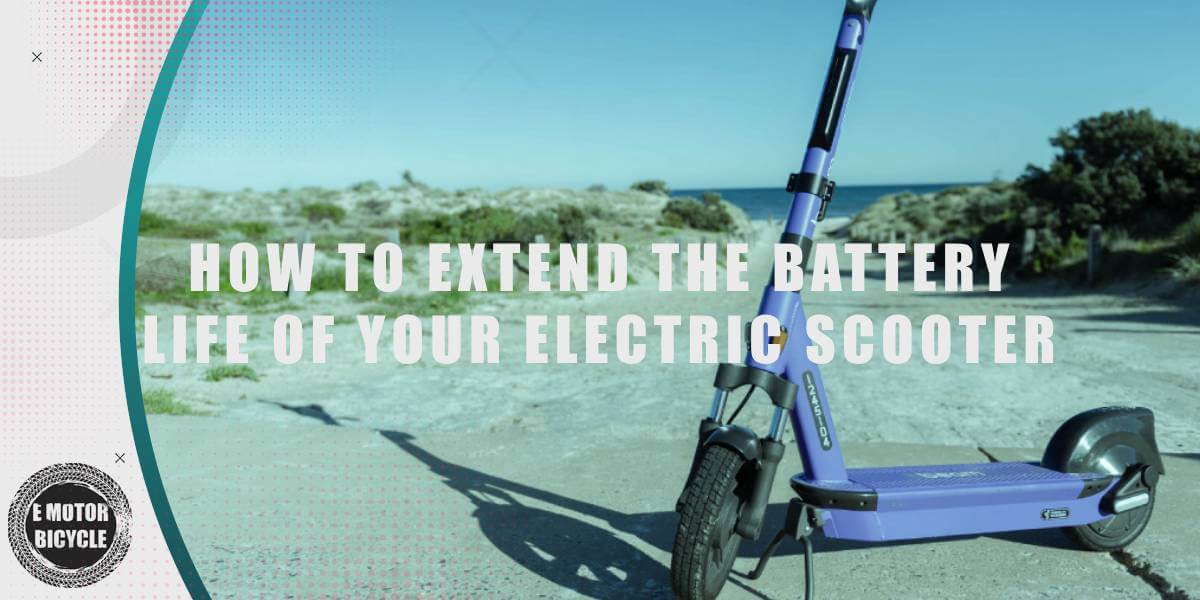As e-scooter enthusiasts, we all know the thrill of scooting down city streets on our trusty electric scooter. However, the joy can be short-lived if the scooter’s battery life is insufficient. But I’m not talking about the fact that you simply forgot to charge the battery before a ride (it’s happened to everyone, I’m sure); I’m talking about the fact that sometimes the battery dies quite unexpectedly. The reasons for wear and tear can be different; generally speaking – it’s inevitable. But is there anything you can do to delay the moment of replacement for as long as possible?
This article is about how to extend electric scooter battery life. My tips are based on personal experience, so if you follow them, even an inexpensive, low-energy scooter can last you quite a long time.
Tips for extending battery life

In order to understand how to extend the battery life of an electric scooter, we need to understand what we are dealing with. Don’t you agree? So, modern e-scooters use lithium-ion batteries. They differ from the previously used lead-acid ones by their higher energy density (more energy in a smaller size), lower weight, and longer life.
Understanding how such a battery works has led to some rules of thumb for charging them. Here’s what you need to know.
Proper charging techniques

Correct charger
Yes, oddly enough, with the incredible number of universal chargers available in today’s world, your scooter likes to be charged with a native charger. It’s best to use a “native” charger; if it breaks, order a similar one from the manufacturer. But do not use third-party chargers.
This does not mean that you should not do it if you forgot the charger at home and need to recharge your electric scooter. But still, if possible, try to avoid such situations.
Charging frequency and duration
Probably the most frequent question from users is, “How often should I charge the battery?”. Well, my answer is “as often as you need to, but not as often as you think you need to”. Let’s define the normal operating charging range (usually indicated on the indicator). Let it be 30-80%. That is, if your battery is down to 50% and you don’t need to travel a long distance – don’t charge unnecessarily.
It’s like force-feeding a baby, if you will. He doesn’t need to; he’s not hungry! Everything works fine. And constant recharging can have a significant effect on wear and tear.
Overcharging or completely discharging
Both are very bad. A lithium-ion battery, of course, won’t burst from overcharging or dry out if you discharge it to 0. But those factors can affect its life. So, as I said, try to charge the e-scooter when the indicator mark has reached 30%, and keep an eye on it when it reaches 100% at the charging station. Once it reaches full charge, unplug the scooter immediately. That is, you understand that “charging while I sleep at night” is not in question. After turning it off, let the scooter rest for 5 minutes and go about your business.
Charging under the right conditions
Temperature matters, folks! Your battery doesn’t like extreme conditions. So, keep it in comfortable conditions – not too hot or cold. That is, at room temperature. It is also logical that if your electric scooter overheats after traveling, it should be given time to cool down.
Again, any rule can be broken, of course. There are situations when you simply cannot be around and control all the processes. But remember everything said and try to create comfortable conditions for your vehicle. It will return a hundredfold.
Maintaining optimal battery temperature

Now, let’s get to the hottest (and coldest) topic – temperature. This is the silent killer for the battery. Think of it like a flower: if you expose it to unfavorable conditions, it will wilt.
Heat speeds up chemical reactions inside the battery, increasing wear and tear. On the other hand, extreme cold slows down these reactions, reducing the battery’s efficiency. It’s a delicate balance; your understanding is critical to extending battery life.
Imagine running your scooter to its limits on a scorching summer day. The battery, which is already coping with the heat from the road, is working overtime. This double whammy can accelerate the aging process and shorten overall life. Conversely, low temperatures can cause your battery to slow down, like a morning run in sub-zero temperatures.
Tips for keeping your battery cool during use and storage
So, how do you extend battery life at high temperatures? Keep it cool?
First, drive sensibly. Limit sprints at full throttle, especially on hot days. Taking breaks between rides allows the battery to cool down naturally. It’s like giving your scooter a breather after a challenging workout.
Find shade for storage – the battery deserves a cool place to rest. Don’t leave it in direct sunlight or the sweltering heat of an enclosed garage.
Precautions when using a scooter in hot or cold weather
Now, let’s talk about how to navigate in extreme weather conditions. This is where you need to get savvy.
In scorching weather, plan your rides for cooler times of the day – early in the morning or late in the evening. It’s not just about you but also about preserving battery life. Don’t leave your scooter in the sun during stops. Find a shaded spot and let it cool down.
When it’s icy, don’t accelerate too fast (or even better, choose another mode of transportation – it’s dangerous!). Cold batteries do not like sudden power surges. The main thing is gradual acceleration.
In both cases, keep an eye on the battery’s performance. If it feels out of whack, you should take a break and recharge it.
Tips for storage and transportation
Your scooter battery, my friend, is a delicate element. Keeping it in a dry and cool place is like a retreat for your battery. Moisture and heat are its nemeses, accelerating the aging process.
Find a cozy spot away from the damp corners of the garage or the sweltering heat of a sunlit room. Buy a breathable cover to protect your scooter from the elements, and you’ll give it a longer, healthier life.
Recommendations for long-term storage
Now, let’s talk about what to do if you leave your scooter idle for a long time. Like a faithful friend, your scooter needs to be prepared for the times when you won’t be riding together.
Ensure the battery is neither fully charged nor discharged before sending it to long-term storage. Aim for an optimal value of 50-80% of charge. If possible, remove the battery altogether. This way, you will avoid unnoticeable discharge, which occurs even when the scooter is switched off and will ensure that the battery wakes up from its sleep.
Tips for transporting your scooter without damaging the battery
Now, let’s move on to transportation. Whether it’s a weekend trip or a daily commute to work, the battery deserves careful handling.
First of all, secure it properly. Tighten the screws, fold it compactly, and ensure a snug fit.
Avoid rash maneuvers: sudden stops and turns can dislodge the battery and damage it. Any violent shock can damage it.
Importance of regular maintenance

Regular maintenance plays a key role in extending battery life. Basically, it’s a standard maintenance check, as with any vehicle, to identify and correct potential problems before they escalate. Cleaning, touch-ups, tune-ups – these simple actions contribute to the overall well-being of the battery.
A well-repaired scooter runs more efficiently, putting less strain on the battery. Think of it as running smoothly without any hiccups. Regularly checking the tire pressure, brakes, and overall condition of the scooter ensures that every ride is enjoyable and gentle on the battery.
The main types of maintenance that the user can perform on their own
Now let me tell you how to take care of the “health” of your electric scooter and its battery, particularly.
Let’s start with the basics: cleanliness is the key to battery longevity. Regularly wipe down the scooter, removing dirt and grime that can accumulate unnoticed “under the hood” and interfere with stable riding over time. Checking tire pressure also relates to smooth operation and your immediate safety on the road. And, of course, one of the most important parts is the brakes. Well-functioning brakes reduce the need for sudden stops and lessen the strain on your battery.
In general, keep an eye on the overall condition of the scooter. Wipe, feel, tighten all loose screws and bolts. These simple manipulations do not take much time but will save your nerves and money.
Conclusion
In conclusion, taking care of your e-scooter battery is like an investment in a long and strong relationship. Follow these simple tips, and you will enjoy a smooth ride for many more years. Happy riding!











